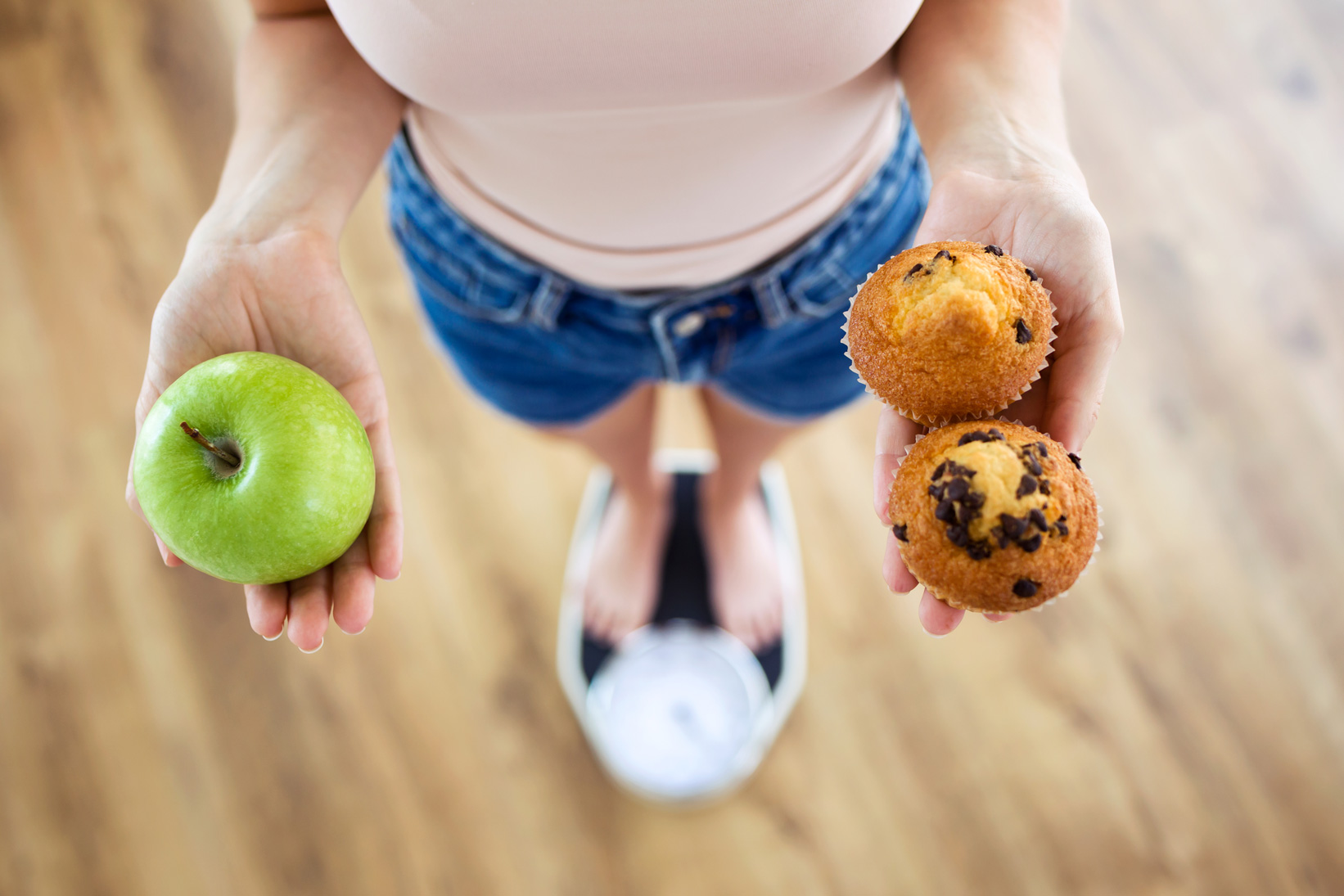Eat This, Not That, for Better Health

When it comes to losing weight and turning your health around, small dietary choices can make a big difference.
If you’re trying to achieve a specific weight loss goal, it can feel challenging at times. We’ve all had a setback or two on the scale that can lead to frustration — or worse. That’s why Elizabeth Ferrer, RDN, a clinical dietitian at the University of Miami Health System, encourages her patients to focus on the little things as they go about their daily dietary choices.
“It’s important to find a balance in your diet and learn when it’s okay to eat something,” she says. “Being prepared and planning ahead of time is important. You can have a piece of cookie at work for a special occasion, but just don’t make it an everyday thing.”
By choosing this — and not that — you can shave big-time calories each day, and ultimately drop pounds over the long haul.
EAT: An apple & a handful of nuts
NOT: The brownie in the break room
For many, work temptations are a major cause of calorie consternation. Ferrer says the best way to fight the constant barrage of treats is to equip yourself with simple and healthy snacks prepared ahead of time. “If you give into the brownie at work, it’s going to be at least 300 additional calories,” she says. An apple, on the other hand, is about 80 calories, while a handful of peanuts is around 150.
EAT: Plain Greek yogurt with fresh fruit
NOT: Fruit-flavored yogurt
Yogurt with added fruit may appear to be a healthy choice at first glance. However, the fruit is more like a sugary jelly, says Ferrer. A better choice is to purchase plain Greek yogurt and then add your own fresh fruit for flavor.
“Plain Greek yogurt has significantly less sugar and much more protein,” she says. “Plus, adding your own fruit provides valuable micronutrients and also tastes much fresher.”
EAT: Quinoa or couscous
NOT: White rice
When it comes to the grains you serve with dinner, this one is an easy choice. Both quinoa and couscous pack more than twice the fiber of white rice to make you feel fuller faster. Plus, they each contain significantly more protein than the rice.
EAT: Spinach or kale
NOT: Lettuce
None of these leafy greens are a particularly bad choice for your diet. What gives the darker leafy greens the edge, says Ferrer, is the big-time micronutrient punch that they provide. While lettuce is mostly water and fiber, both spinach and kale provide an abundance of nutrients like calcium, magnesium and potassium.
EAT: Olive oil and vinegar
NOT: Ranch and caesar dressings
While salads always seem like a healthy choice, Ferrer says they are often undone by the dressings that go on top of them. With a mixture of olive oil and vinegar, you can get the needed flavor without all the added calories and saturated fat present in creamy salad dressings. Plus, olive oil adds healthy monounsaturated fats.
DRINK: Water
NOT: Juice or soda
The final item on Ferrer’s list of dietary choices is the most vital of all, and one that is often forsaken in favor of more sugary or flavored drinks: water. “When it comes to fluid, I recommend sticking to water,” she says.
“All sodas, even diet ones, prevent us from getting the water we need. Juice strips away the fiber from fruit and just leaves you with mostly sugar. I always recommend choosing whole fruit over juice.”
Wyatt Myers is a contributing writer for UMiami Health News.
